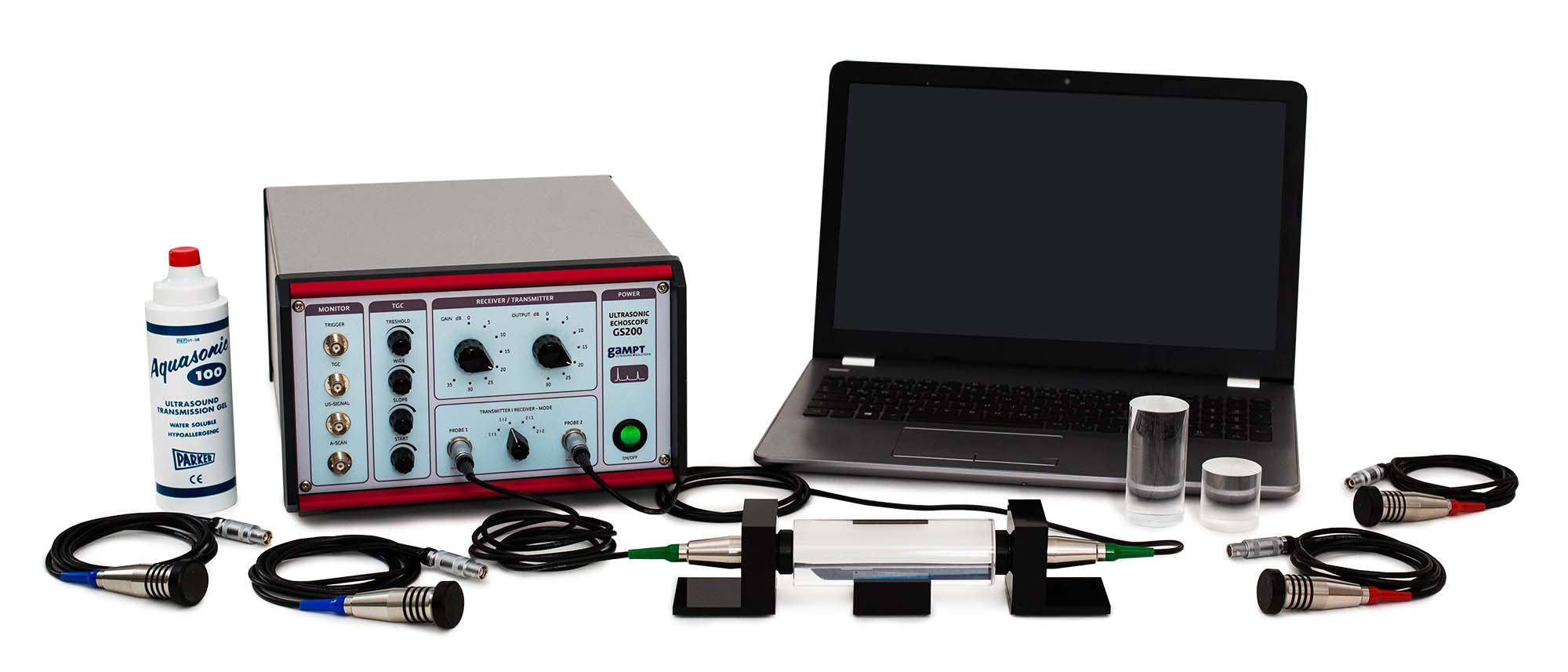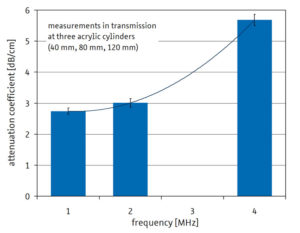Article No. VK-PHY03
PHY03 Acoustic attenuation in solids
Determination of the attenuation of an ultrasonic wave on its way through a medium
- Subject matter of the experiment
- Theoretical and practical aspects of the experiment
- Results
- Equipment
- Related Experiments
By means of amplitude measurements according to the ultrasonic transmission method in samples of different lengths, the attenuation of an ultrasonic wave on its way through a medium is determined. Ascertaining the acoustic attenuation coefficient at different ultrasonic frequencies sheds light upon the frequency dependence of acoustic attenuation.
Keywords: Acoustic attenuation in solids, scattering, absorption, reflection, attenuation coefficient, frequency dependence of acoustic attenuation, transmission measurement
Sound waves lose energy on their way through a medium due to different processes such as absorption, scattering or reflection. This loss of energy causes a change in the sound intensity, which decreases as the distance increases. The strength of this attenuation is dependent on the material. It can be determined by the measurement of the amplitudes of transmission pulses or reflection pulses in an amplitude scan for different path lengths and can be described by the material-specific attenuation coefficient. In the experiment, these measurements are carried out at acrylic cylinders of different lengths. In order to be able to make statements about the frequency dependence of sound attenuation in acrylic, these measurements are carried out for different sound frequencies.
The graphic presents the measurement values of an example measurement in through-transmission at 3 acrylic test cylinders of different lengths. In the examined frequency range from 1 MHz to 4 MHz the attenuation coefficients ascertained lay between 2.7 dB/cm and 5.7 dB/cm. It can be seen that the acoustic attenuation in acrylic sharply increases as the frequency rises. In order to extend the database with other path lengths the cylinders can also be investigated with the reflection method.
| Ord.nor. | Description |
|---|---|
| 10400 | Ultrasonic echoscope GS200 |
| 10151 | 2 ultrasonic probes 1 MHz |
| 10152 | 2 ultrasonic probes 2 MHz |
| 10154 | 2 ultrasonic probes 4 MHz |
| 10207 | Test cylinder set |
| 70200 | Ultrasonic gel |

